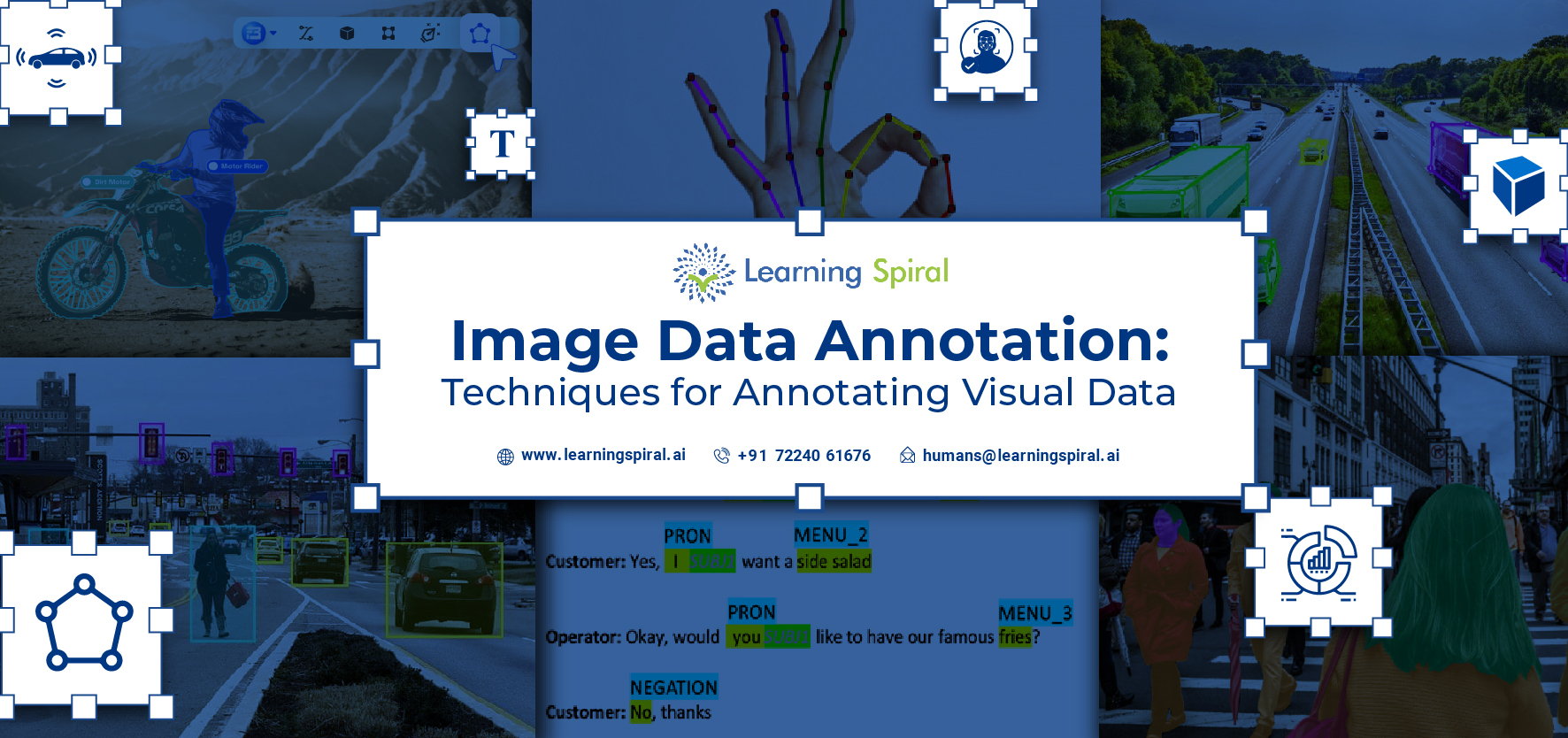
Data annotation includes labeling data that can be both text and image. More specifically, it is known as image data annotation, including techniques like object classes, bounding boxes, and semantic segmentation. It is a crucial step in developing computer vision models, as the quality of the annotated data directly impacts the performance of the trained model.
Various image data annotation techniques are available, each with its own strengths and shortcomings. The best technique for a particular project or service will depend on the specific nature of said project. By checking various factors like the type of data being annotated, the size of the dataset, budget, etc., one can choose among the many techniques.
Here are some of the most common image data annotation techniques. These techniques are widely used in the data annotation sector, and many of these are vouched by the field-expert Learning Spiral Pvt. Ltd.

Bounding box annotation
This most commonly used image data annotation technique involves manually drawing rectangular boxes around objects of interest in an image. Bounding box annotation is relatively simple to perform, but it can be time-consuming for large datasets. It is generally applied for computer vision applications and machine learning and are most commonly used for object detection.
Polygon annotation
Polygon annotation is similar to bounding box annotation, but it allows drawing more precise shapes around objects with irregular shapes. By selecting the x and y coordinates, polygon annotation performs the task. This makes it a better option for services requiring more precision and finished look. Polygon annotation is even more time-consuming than bounding box annotation, but it can be more accurate for certain types of data.
Semantic segmentation
Semantic segmentation is the most complex image data annotation technique. It involves labeling each pixel in an image with a specific class label. It works perfectly in identifying objects because it contains labels or pixels for every image. Semantic segmentation is very accurate, but it can be very time-consuming to perform.
Other image data annotation techniques
In addition to the techniques listed above, there are a number of other image data annotation techniques available, such as:
- Keypoint annotation: Keypoint annotation involves identifying and labeling key points on objects in an image, such as the eyes, nose, and mouth on a human face.
- Polyline annotation: Polyline annotation involves drawing lines on images to connect objects or to trace the contours of objects.
- 3D annotation: 3D annotation involves labeling objects in images with 3D information, such as depth and orientation.
Image data annotation is an essential step in the development of high-performing computer vision models. By following the tips above, producing high-quality annotated data will be more accessible, and it will help the computer vision models achieve their full potential.

